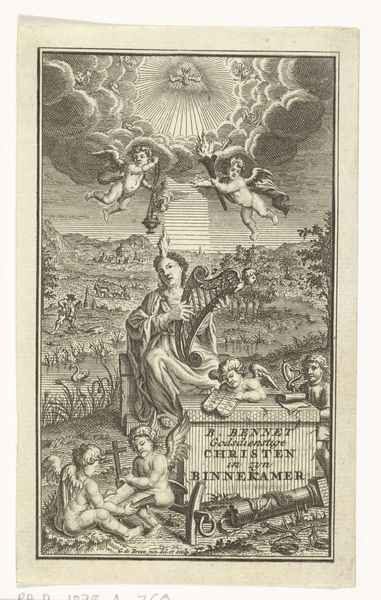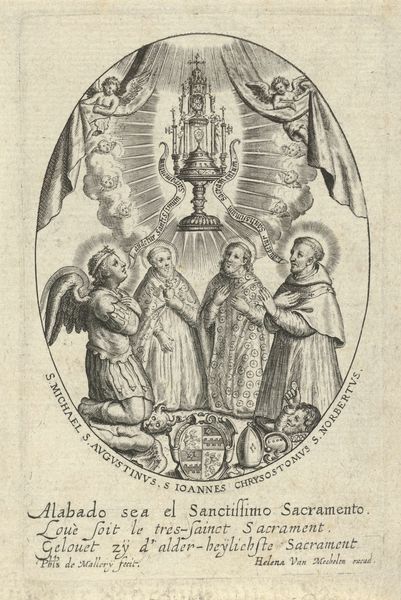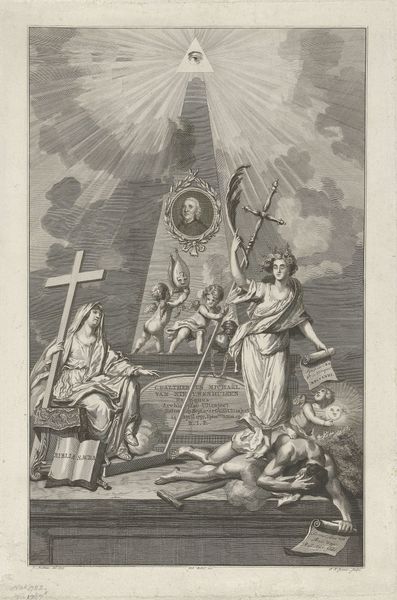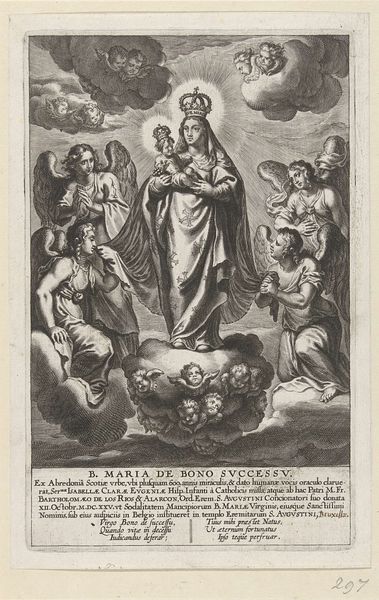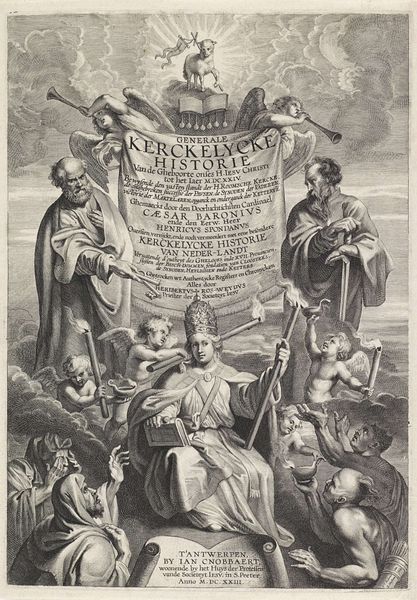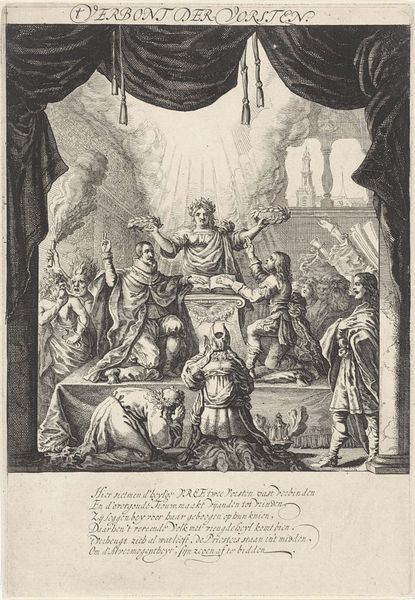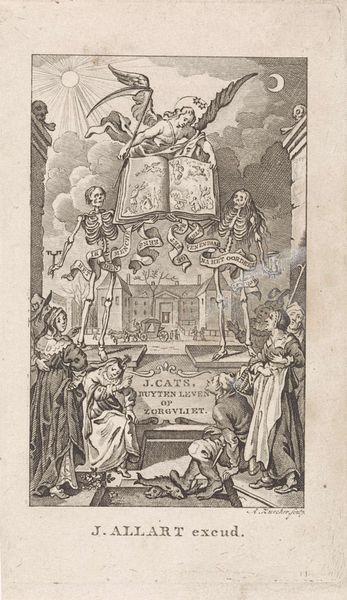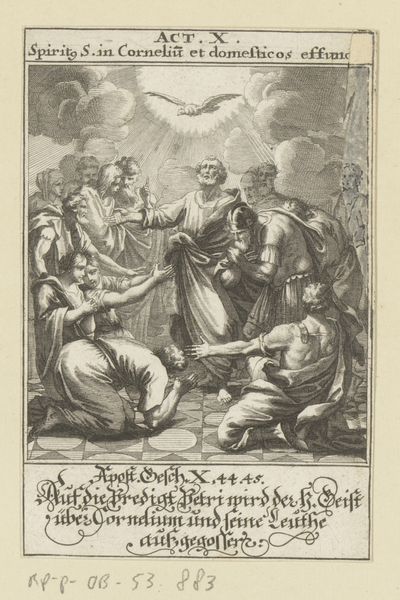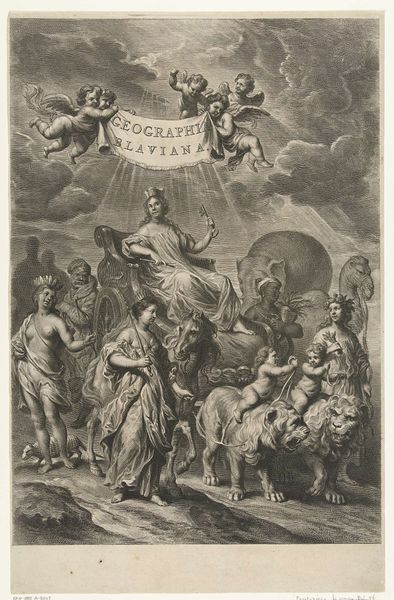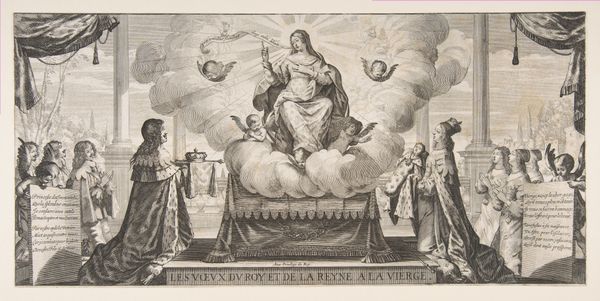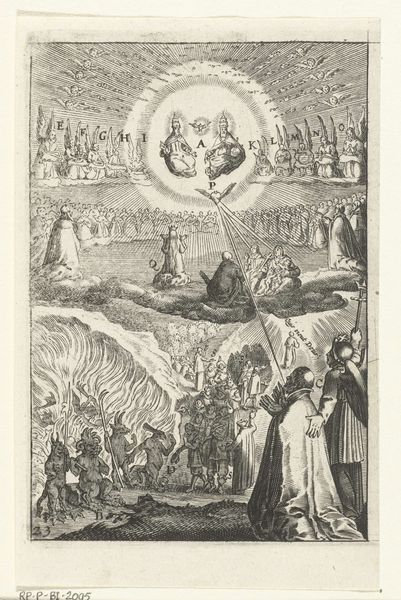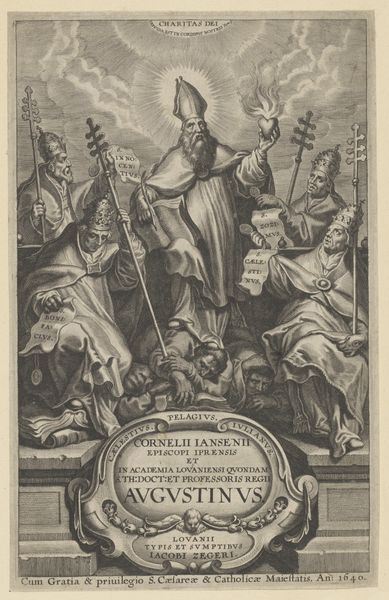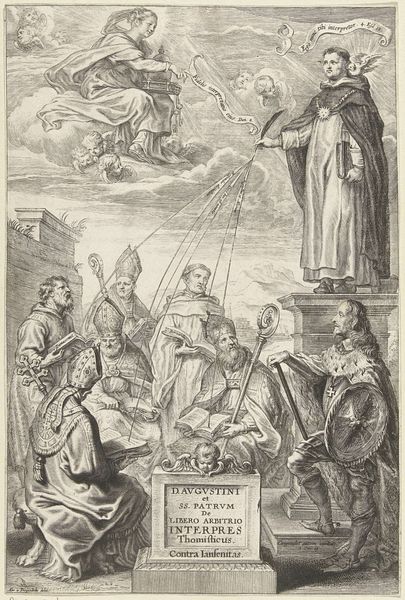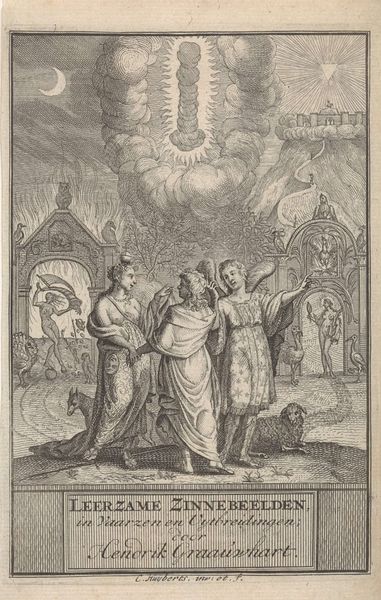
Titelpagina voor: Oliver Florentius Waterloop, Monita spiritualia et moralia, 1657. 1657
0:00
0:00
drawing, graphic-art, print, pen, engraving
#
portrait
#
drawing
#
graphic-art
#
allegory
#
baroque
#
pen drawing
#
mechanical pen drawing
# print
#
pen illustration
#
pen sketch
#
pen
#
engraving
Dimensions: height 178 mm, width 130 mm
Copyright: Rijks Museum: Open Domain
Curator: The symmetry and precise lines immediately strike me in this baroque engraving. There’s an almost mathematical quality to the composition. Editor: Indeed. The Rijksmuseum holds this remarkable title page, “Titelpagina voor: Oliver Florentius Waterloop, Monita spiritualia et moralia," created in 1657 by Cornelis van Caukercken. As a print and drawing, its social context as a book illustration is really important. Curator: I am intrigued by the cascading levels – from the Virgin and Child at the apex, radiating light, to the cascading fountain and then the portrait at the base, firmly rooted in earth. There’s a strong directional force at play, pulling the eye. Editor: And those tools hanging in the tree above the Virgin Mary—ladders, ropes. What narrative are they suggesting? I’d hazard a guess these tools evoke salvation. It is a piece steeped in religious iconography designed for didactic purposes. Curator: Semiotically, those flanking figures add to that reading, with their formalized gestures offering us insight into their allegorical meaning within the artist's design. They act like textual anchors, offering guidance to interpret the other details within. Editor: Exactly! This wasn't merely decoration; the book served an important function within 17th-century religious culture, and the image worked to immediately signal the content's spiritual focus to a literate, and devout, public. Curator: What’s fascinating to me is how Van Caukercken used line and form here to communicate this piety so efficiently. It is almost schematic but is simultaneously alive with visual texture. Editor: It illustrates how much power visual language held during a period rife with religious and political turmoil. The printing press allowed images like this one to influence how the world was perceived in ways that were radically different than those that came before it. Curator: Reflecting on the details here, from line to allegorical structure, clarifies that the graphic arts of the Baroque period aimed for far more than pure aesthetic pleasure. They engaged in the articulation of knowledge itself. Editor: Yes, thinking through its place within society underscores the very real role that prints such as this one had in promoting morality. It makes one wonder how artists today conceptualize public virtue and communicate similar ideas.
Comments
No comments
Be the first to comment and join the conversation on the ultimate creative platform.
